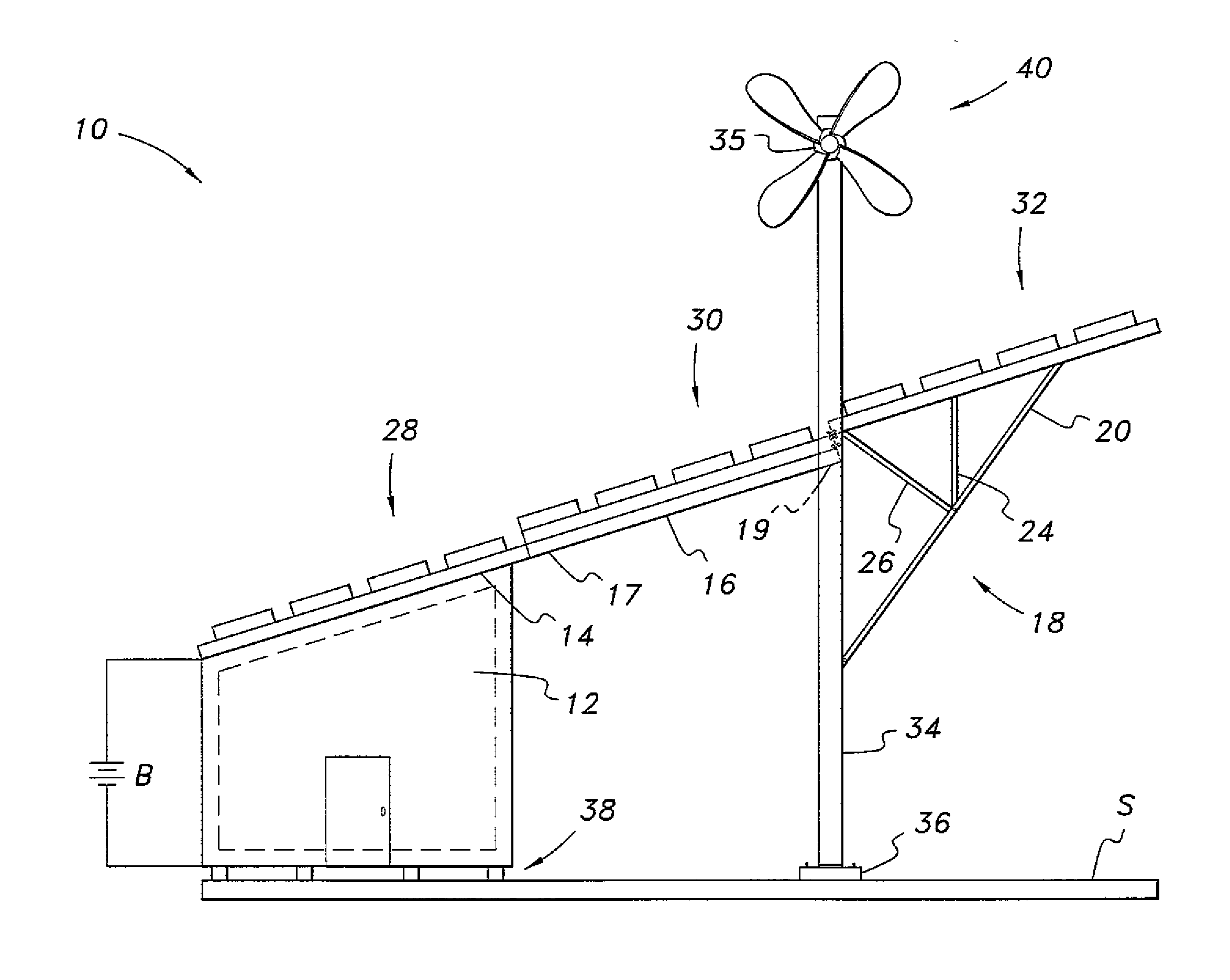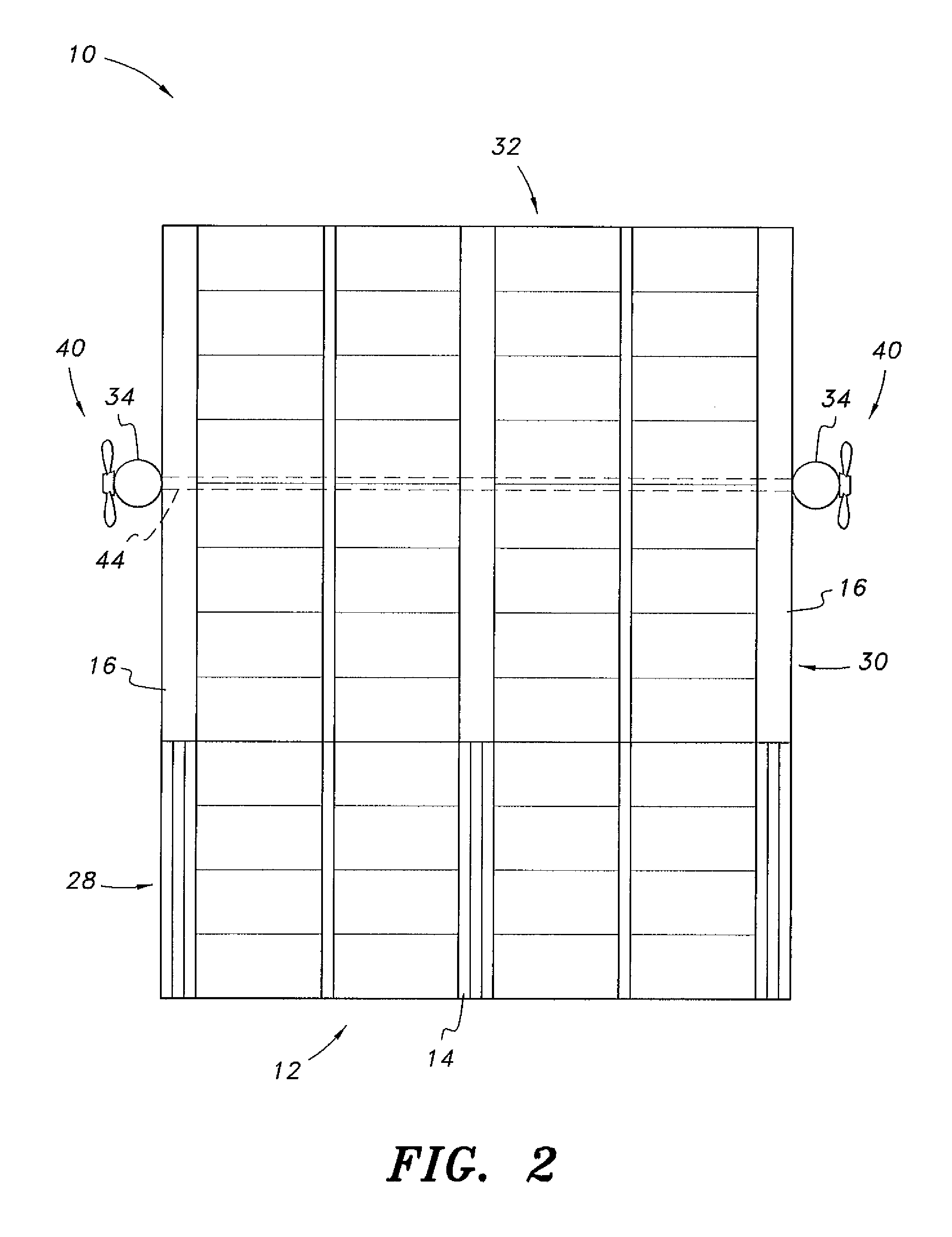Portable solar and wind-powered energy generating system
a solar and wind-powered energy generating system technology, applied in the direction of wind motors with solar radiation, electric generator control, greenhouse gas reduction, etc., can solve the problems of battery charging capacity, the ability to recharge the storage cell or battery remains a major drawback to acceptance by the general populace, and the demand for electrical power continues to increase unabated
- Summary
- Abstract
- Description
- Claims
- Application Information
AI Technical Summary
Benefits of technology
Problems solved by technology
Method used
Image
Examples
Embodiment Construction
[0034]FIG. 1 illustrates a first embodiment of the portable solar and wind-powered energy generating system 10. The system 10 is an ecologically friendly, portable station for generating electricity. The portable solar and wind-powered energy generating system 10 may be used as a portable charging station for electrically driven vehicles, for example. It should be understood that the electrical power may be used for any desired purpose, such delivery to an electrical load, such as a storage battery, a power outlet, a charger for electrical vehicles or the like, or a combination thereof. Alternatively, the electrical energy may be transmitted into the pre-existing electrical power grid. Further, the power outlet, storage battery or other electrical load may be associated with a portable office, work site, portable educational facility or other venue.
[0035]As best shown in FIGS. 1 and 2, the portable solar and wind-powered energy generating system 10 includes a portable enclosure 12 h...
PUM
 Login to View More
Login to View More Abstract
Description
Claims
Application Information
 Login to View More
Login to View More - R&D
- Intellectual Property
- Life Sciences
- Materials
- Tech Scout
- Unparalleled Data Quality
- Higher Quality Content
- 60% Fewer Hallucinations
Browse by: Latest US Patents, China's latest patents, Technical Efficacy Thesaurus, Application Domain, Technology Topic, Popular Technical Reports.
© 2025 PatSnap. All rights reserved.Legal|Privacy policy|Modern Slavery Act Transparency Statement|Sitemap|About US| Contact US: help@patsnap.com



